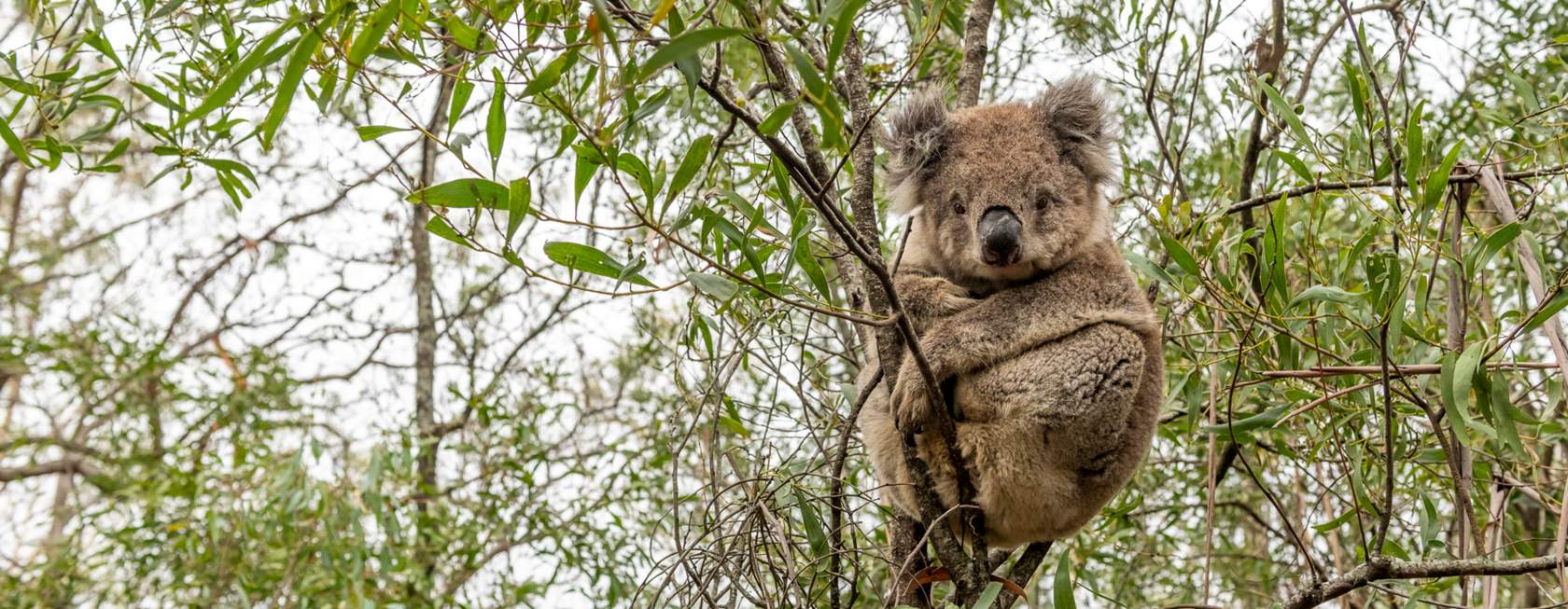
Koalas (Phascolarctos cinereus) are a common sight in some parts of the state and are a source of great fascination for locals and visitors alike. They are arboreal (tree-dwelling) marsupials who occasionally use the ground to access water and other trees. While koala populations are considered secure in Victoria compared to other states, they are very concentrated in small areas due to habitat destruction and urbanisation.
Appearance
Koalas are easily identifiable by their round head, fluffy ears, and oval shaped nose. They are covered in a thick fur, usually grey-brown in colour, with white fur on the chest, inner ears and arms.
Distribution and Habitat
While you may see several koalas in a small area in some locations, they are actually territorial and have defined territories. Male koalas use dark-stained scent glands located on the upper part of their chest to mark their territory, which helps in establishing and maintaining their range. The tall eucalypt forests and woodlands throughout southern and central Victoria are the habitats of choice for Victorian koalas. Unfortunately, habitat fragmentation and deforestation are significant threats to preserving koala habitat.
Diet
Koalas primarily consume the leaves of eucalyptus trees, however they will also consume other types of leaf including acacia, melaleuca and corymbia. Typically, a koala will feed on only a couple of local species out of the more than 800 eucalyptus varieties found in Australia. This diet is characterised by its low energy and nutrient content, necessitating that koalas sleep for up to 20 hours a day to conserve energy.
Behaviour
The majority of a koala’s life involves eating and sleeping, but they will occasionally walk on the ground to access different trees. They usually produce only one joey every year during their mating season. After approximately six months in the pouch, the koala joey begins to wean from mum’s milk onto leaves. To be able to digest the eucalyptus, the joey must consume pap from their mother to colonise their digestive system with gut microbes required to break down the leaf. Pap is a soft liquid made up of digested eucalyptus leaves, produced from the mother's cloaca.
Breeding season
During the mating season, which spans from August to March, Wildlife Victoria frequently receives reports of aggressive behaviour among koalas. These mating rituals can be quite intense, often resulting in loud vocalisations and potential injury or exhaustion for the female. It is advisable not to disturb these natural processes, but concerns can be directed to Wildlife Victoria’s Emergency Response Service. Following a gestation period, the joey remains in their mother’s pouch for about six months before spending additional time clinging to her back. The joey typically becomes independent at one year of age.
General fun facts
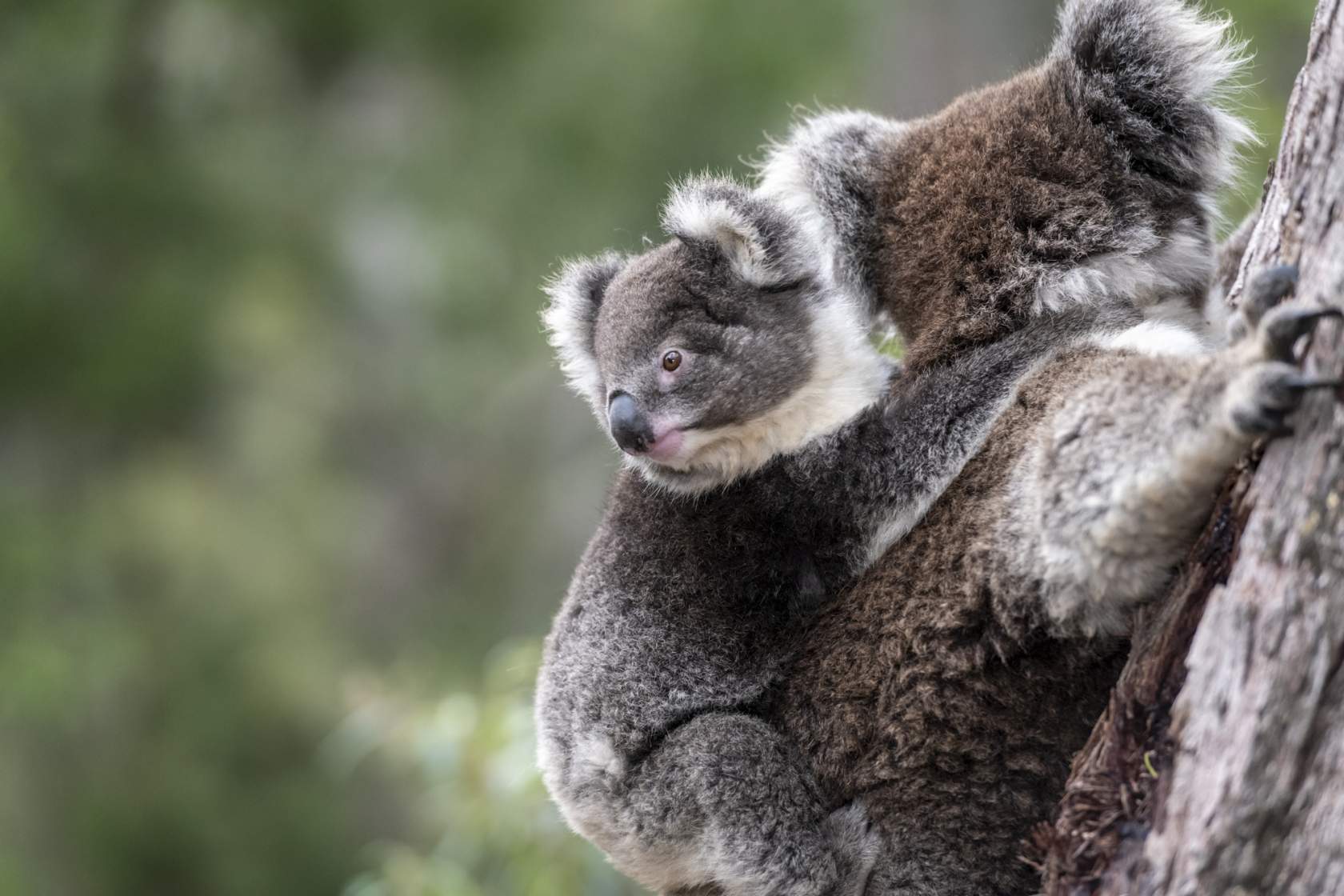
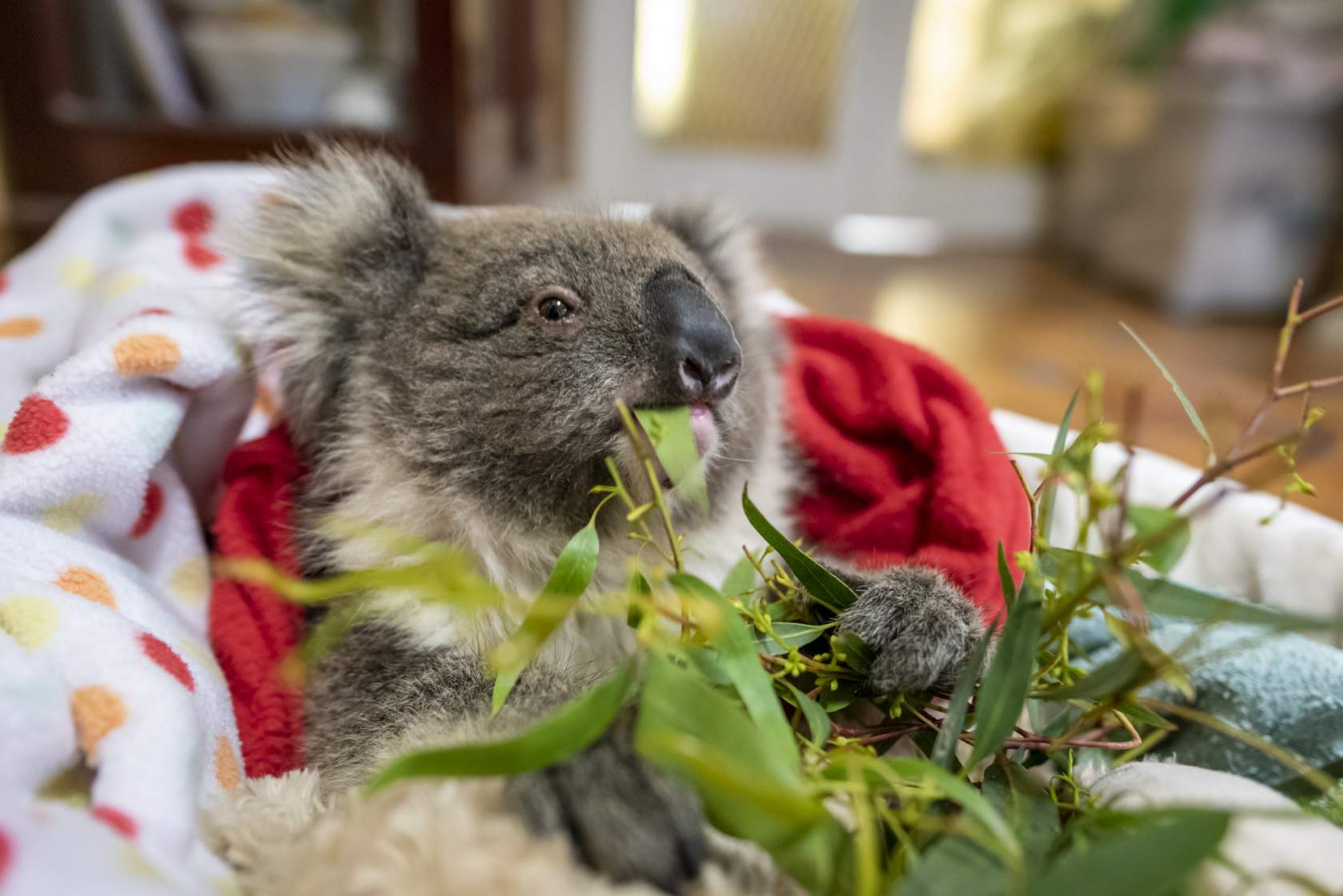
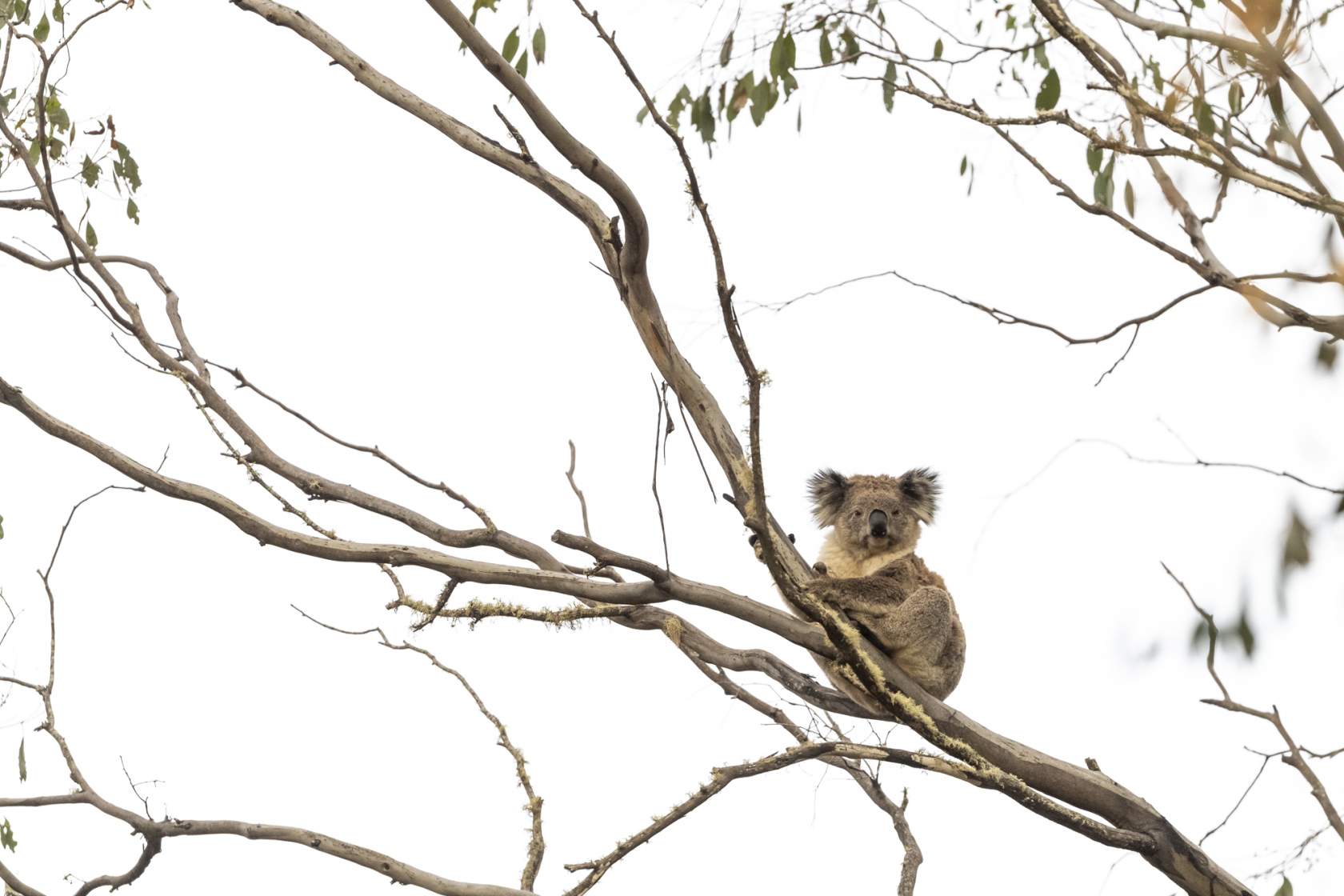
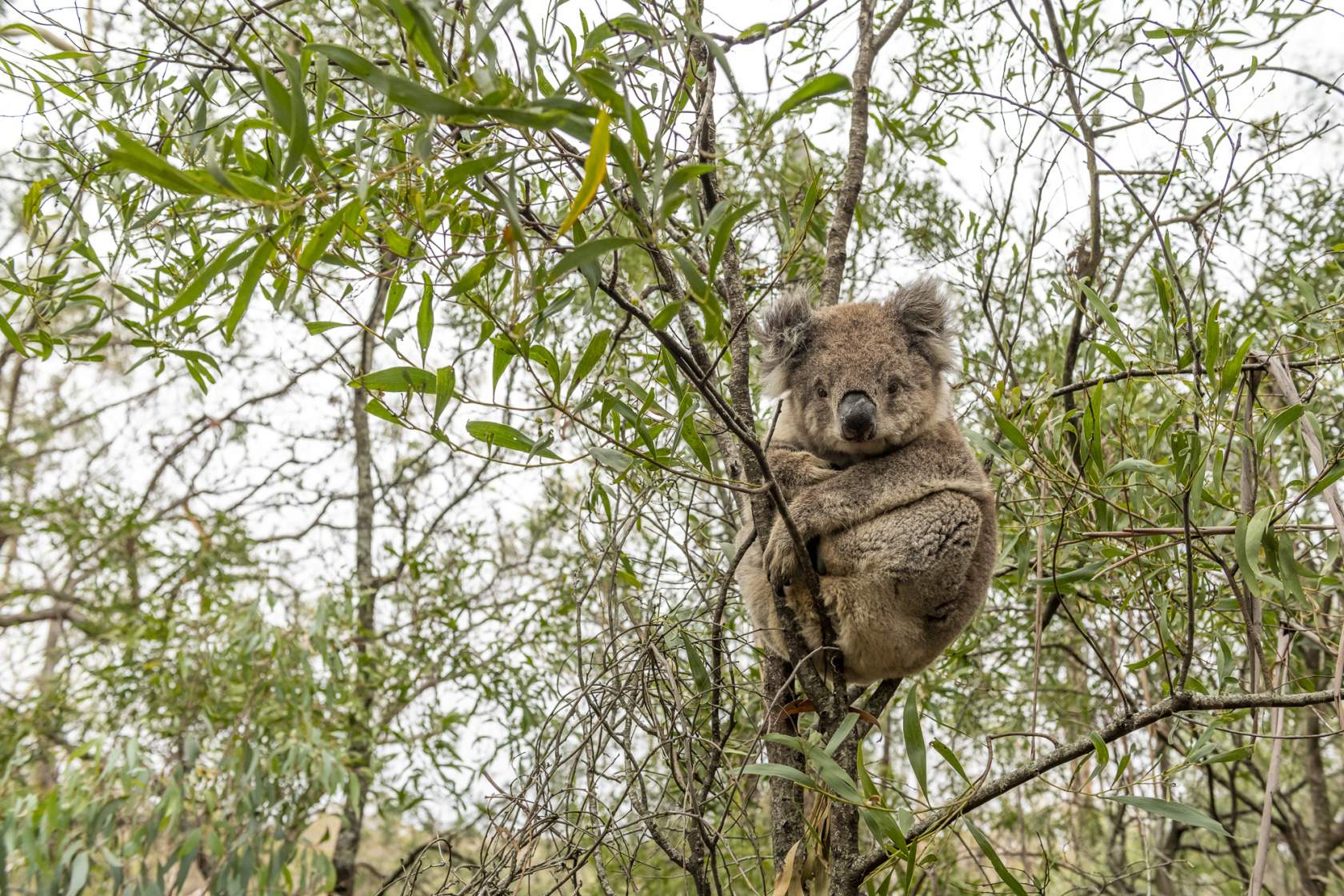
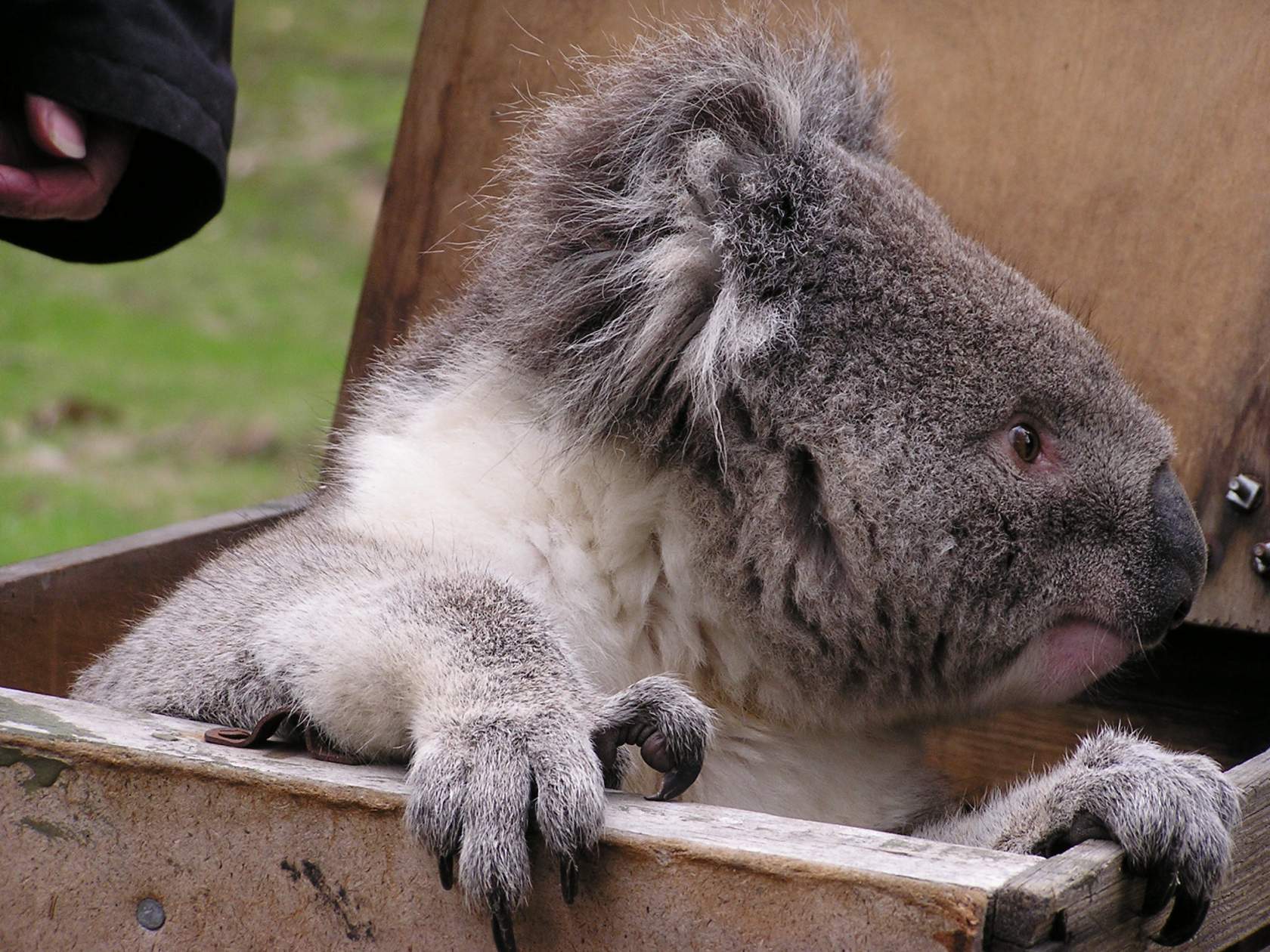
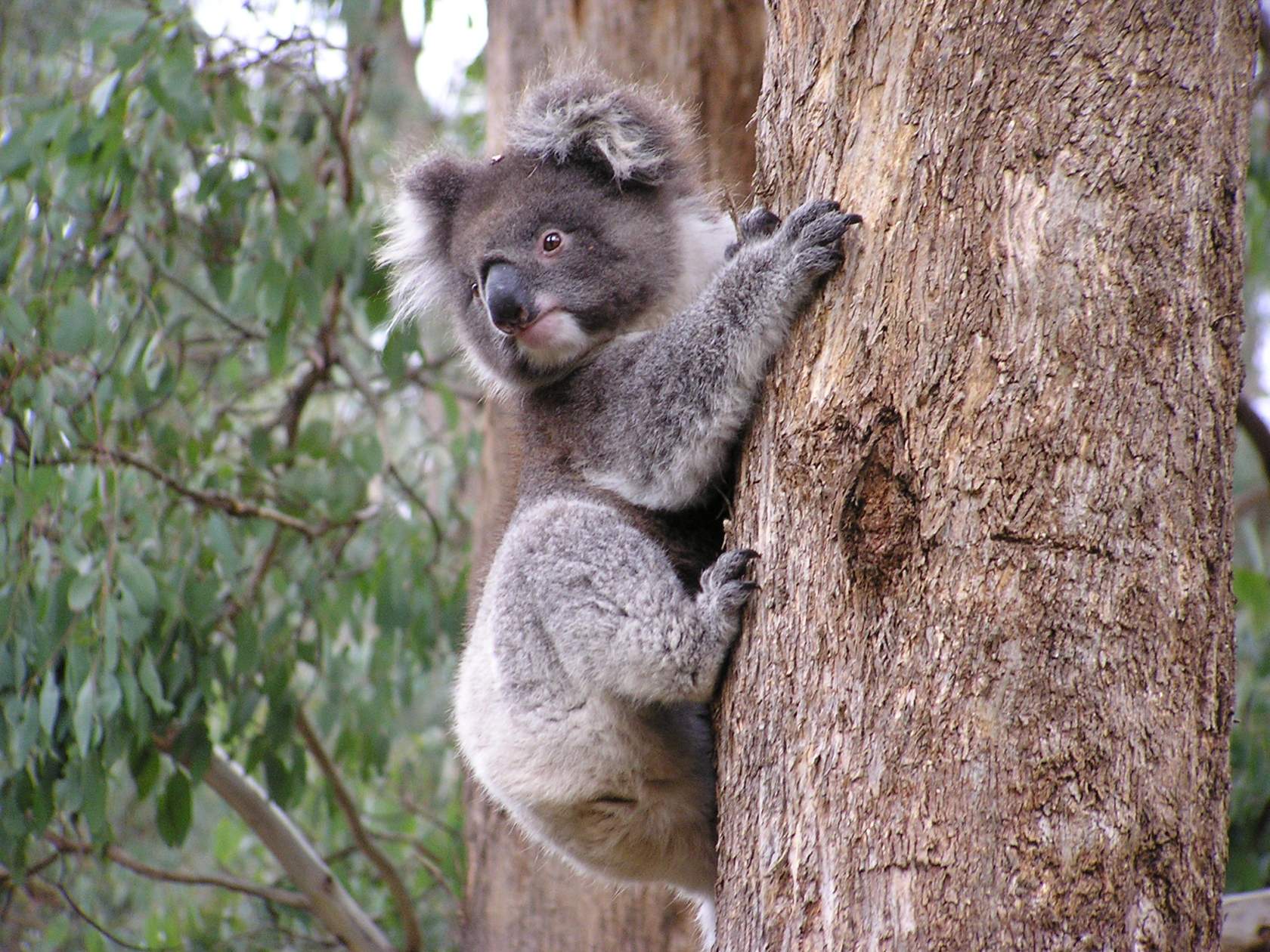
What can you do to help?
The most common koala reports made to Wildlife Victoria are for those that have been hit by a vehicle, koalas found on the ground, and those that have been displaced from their natural habitat.
Koalas are also at risk for diseases such as oxalate nephrosis, mange, chlamydia and retrovirus.
Koalas are frequently hit by cars due to their slow-moving nature and their tendency to cross roads while searching for food or moving between trees. Their natural habitat often intersects with roads, both in country and suburban areas, increasing their risk of collisions. If you encounter an injured koala, it is crucial to stop and assess the situation from a safe distance. Avoid approaching or handling the koala yourself. Instead, call Wildlife Victoria’s 24/7 Emergency Response Service on (03) 8400 7300. Providing precise information about the location and condition of the koala will help ensure a swift and effective rescue.
It’s important to note, just because a koala has managed to climb a tree, it does not mean they will be okay. These animals may still need to be rescued and assessed for injuries by a veterinarian.
While koalas do spend most of their time in trees, they do occasionally utilise the ground to access other trees and water. However, koalas are very vulnerable on the ground and normally do not stay for long. A koala staying on the ground and either not moving or walking slowly is a sign that something is wrong. If you see a koala displaying this behaviour, please call our Emergency Response Service on (03) 8400 7300.
Wildlife Victoria receives a number of calls for displaced koalas. This generally means they have been found in residential, suburban or urban areas. Habitat destruction and increased urbanisation is having a significant impact on koala habitation. As they are territorial animals, they often won’t move on when their natural habitat is destroyed.
If you spot a koala in a tree outside your home, first check if they appear injured or if there are factors preventing the koala from descending, such as pets in the yard. If there are no immediate obstacles, the koala will likely move on in a day or two. Keep your pets away and inform your neighbours, especially those with dogs. If dogs have been around, it may take up to 24 hours for the koala to feel safe enough to come down. If the koala is injured, contact us immediately on (03) 8400 7300.
Diseases impacting koalas
Mange is a skin disease caused by parasitic mites and which causes symptoms such as severe itching, hair loss, and skin infections. Affected koalas may appear lethargic, and have scabs or sores, particularly on the paws, arms, and chin. If you encounter a koala showing these symptoms, it’s important to contact Wildlife Victoria with photos and the location of the animal.
Oxalate nephrosis, commonly known as renal failure, is a serious condition in koalas caused by the accumulation of oxalates in the kidneys. This condition is often linked to the ingestion of certain eucalyptus leaves that are naturally high in oxalates, leading to kidney damage and impaired function. Symptoms of oxalate nephrosis include lethargy, weight loss, and excessive thirst. Commonly, these koalas are called in when they are found on the ground, skinny and drinking from ground water sources (puddles, ponds, sprinklers etc.). If you observe a koala showing these signs, it is crucial to contact Wildlife Victoria.
We hope that by increasing your understanding and awareness of our beautiful wildlife, you will feel empowered to manage wildlife situations confidently and in an informed, safe and appropriate manner. For support at any time, please call our 24/7 Emergency Response Service on (03) 8400 7300.
